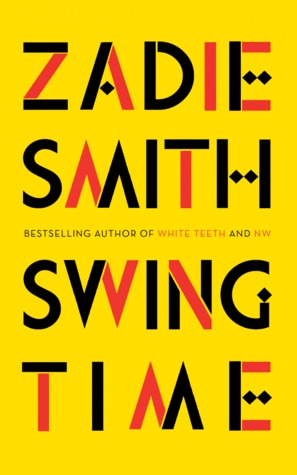Swing Time: A Novel
- By Zadie Smith
- Penguin Press
- 464 pp.
- Reviewed by Nathan Blanchard
- December 28, 2016
An entertaining, nuanced story of race, envy, and the limits of friendship.

I remember thinking that I had never read anything quite like White Teeth. Zadie Smith’s prose hummed with energy, syntactic acuity, and graceful, rhythmic precision. In the years since White Teeth, Smith has experimented with her voice, and each of her subsequent books has been a transformation of narrative style while she continues to explore themes of family, race, class, and friendship. Swing Time, Smith’s latest novel, is a fresh continuation of that tradition, with rich characters, complex relationships, and beautiful truths about the passage of time.
The opening pages introduce us to an unnamed narrator (who remains nameless throughout the novel), a woman who has just lost her job as well as her privacy through some kind of public humiliation. She is contemplative and sulky, and her dire circumstances establish a suspense that builds throughout the book; we want to know what happened to her.
We quickly leap back several decades to when the narrator was a young girl, when she befriends another young girl named Tracey at a dance class in Northwest London in the early 1980s. Both girls are of mixed race, and both dream of the stage. They imagine their futures full of glamorous stardom, fantasies that act as a respite from their gritty neighborhood.
But only one of them has enough talent to realistically pursue dance. Tracey has more ability and grace than the narrator, who is more introspective and brooding, and their complicated friendship exists in a suspended tension between competition and intimacy: “[Tracey] wanted to see a dancer on stage, sweating, real, not done up in top hat and tails. But elegance attracted me. I liked the way it hid pain.”
While Tracey’s white mother is audacious, the narrator’s mother is an outspoken black feminist who spends more time reading than mothering. These four women’s relationships are tested by the girls’ adolescent years, by their emerging adulthood, and by the forces of race and class.
The chapters alternate between the narrator’s youth and her early adulthood. In her twenties, she gets a job as a personal assistant to a world-famous pop star, Aimee, who in some ways resembles Madonna. Aimee is like modern royalty: rich and talented, but also arrogant and out of touch with the real world. She is dislocated by her own power: “To Aimee poverty was one of the world’s sloppy errors, one among many, which might be easily corrected if only people would bring to the problem the focus she brought to everything.”
Aimee’s impulse to build a school in West Africa sends the narrator to an unfamiliar continent, where she encounters new people and new rhythms. As the narrator’s personal life is eclipsed more and more by Aimee, she wrestles with her past, her family, and her friendship with Tracey.
The alternating time periods have distinct concerns, but the narrator’s sharp observations and keen voice easily slides between them, distilling a consciousness that mesmerizes with passages of confession, of memory, and of working through the mess of growing up and living life.
The friendship between the narrator and Tracey is central to how the narrator makes sense of her adulthood, and in this way the book is similar to Elena Ferrante’s Neapolitan Quartet and Rachel B. Glaser’s Paulina & Fran. Like in those novels, the narrator’s sense of self here is filtered through her periodic encounters with her old friend. But it is never derivative. Smith offers her own take on friendship, on leaving home but never forgetting it, a perspective born from her Northwest London origins.
Swing Time is not necessarily about race and class, but these politics inform every aspect of the characters’ lives. Smith handles these points with subtlety, never veering into cliché or laziness. The characters are not reduced to their demographic markers, but rather are complex people who do not deny the ways race and class and gender influence their lives.
For example, when a colleague suggests they find a “woman of colour” for one of Aimee’s projects, the narrator says, “She was worried about under-representation, she often was, which meant really that she was worried about what others might perceive as an under-representation, and whenever we had these conversations I had the eerie sensation of viewing myself as really being one of these things, not a person at all but a sort of object — without which a certain mathematical series of other objects is not complete — or not even an object but a kind of conceptual veil, a moral fig-leaf, protecting such-and-such a person from such-and-such a critique, and rarely thought of except when in this role.”
The narrator is also generous when interpreting lives that differ from her own. Regarding the ways money affects someone’s sense of things, she says, “Maybe luxury is the easiest matrix to pass through. Maybe nothing is easier to get used to than money.” These nuanced perspectives and insights make Swing Time feel like an authentic experience of contemporary life and give dimension to the characters.
Swing Time is a capacious novel: childhood, London, career woes, New York, family and friendship, West Africa, how we change over time. It contains passages of psychological and emotional insight, and it is a joy to read.
Nathan Blanchard is an MFA candidate in the creative-writing program at the University of Alabama in Tuscaloosa. His work has appeared in the Missouri Review, decomP, McSweeney’s Internet Tendency, and elsewhere.

